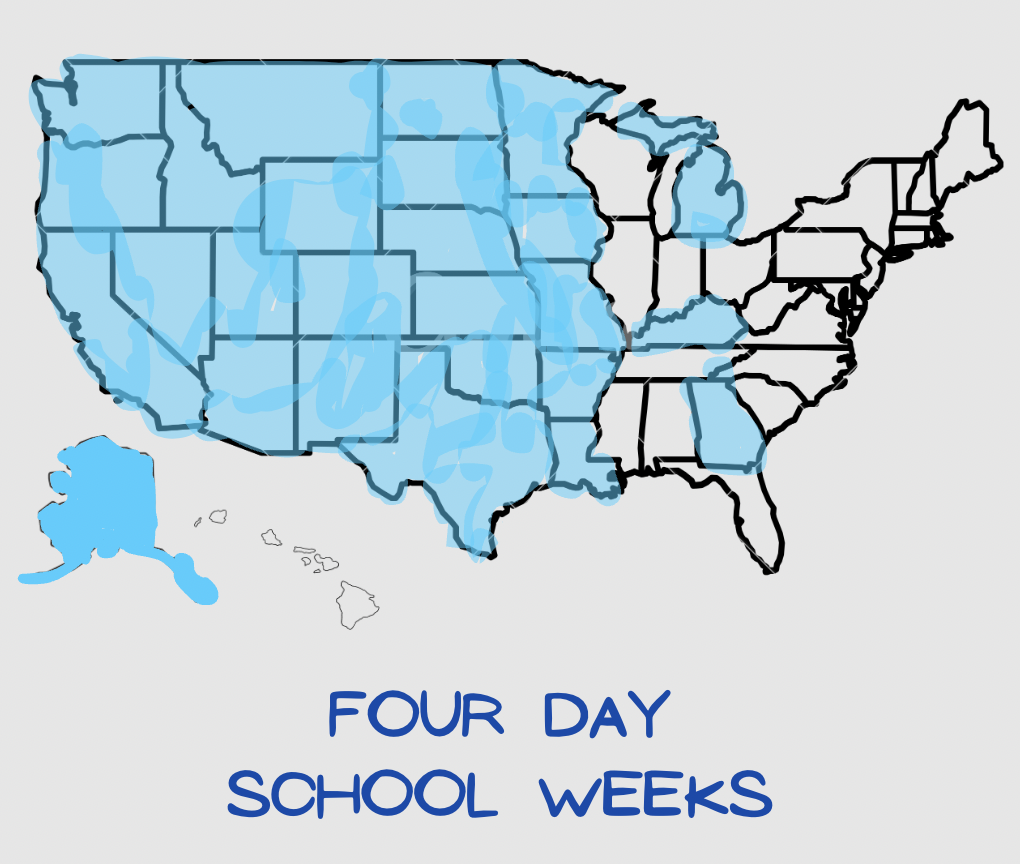One of the most common complaints I hear as a high school student is that the school week is too long. Glued to your desk for seven hours straight, day after day, where your only reprieve is the promise of the weekend. When it finally arrives, you then spend Saturday doing all your extracurriculars and Sunday doing your homework for the weekend with the impending dread that you have to restart the cycle again. Four-day school weeks will prevent student burnout and also improve the impending the problem of teacher shortages.
Along with burnt out disengaged students, many teachers are under-qualified or last resort and have no interest in the subject. The lack of quality educators is caused by the vast weight load a teacher has to carry including the long workdays, extensive lesson planning and the inadequate pay.
“The four-day schedule for a teacher is wonderful. It really has given me an extra day back with my family,” said Jean Schneider, a high school business teacher on ABC news. “When I start on Tuesday, I really feel far more prepared than I ever did on the five-day week, and I think it’s because I’m allowed that extra personal time just to make sure I’m ready.”
Teachers have personal lives and the four-day week gives them time for themselves as well as extra planning time. This increased preparation time can lead to more effective teaching and, ultimately, improved student outcomes. More deliberate teaching will also prevent a large amount of “busy work” or discouraging assignments from being assigned and decrease student burnout. With increased teacher morale, student morale increases as well.
“We know the biggest impact on a student’s experience is the quality of the adult in the classroom with them, whether it’s a teacher or support staff,” Colorado district superintendent Chris Fiedler said on Good Morning America. “[And it’s] a way to recruit folks without being able to pay them as well as our surrounding districts.”
Four-day school weeks give districts a unique appeal to teachers and also improve their unjust salaries with the same amount of pay for less days.
“It was typical to have two or three candidates for a teaching position. After we implemented [a] four-day week, it became typical to have 10 to 12 candidates for a position, so it really was an attractive way to bring in new teachers,” Schneider said.
So far, almost 900 school districts across twenty-six states have started four-day school weeks and have increased by more than 75% since 2020. The biggest concern is the depletion of instruction time for students. With a shorter week, each day is lengthened at least 4o minutes to an hour. The result is about the same instruction time per week for students with a five-day school week and lessened costs of transportation, utilities and maintenance for schools.
While some may say five day school weeks are more effective for students and easier for families, with the instruction time being the same the four day week actually wastes less time that’s being taken up with regular school scheduling (ex: lunchtime, passing times and homeroom). I can say for the familial aspect it does seem more convenient for school to be held five days a week so it aligns with the workweek of the parents. However, many districts with the shortened week have already offered free childcare for the younger kids on Mondays.”
“We’ve improved our graduation rates every year since we transitioned to a four-day week,” Fiedler said, noting that the district saw a graduation rate of over 90% for the first time in 2022. (The previous year, 2021, the district saw a graduation rate of 88.2%%). “We were already on an upward trend there … but what I do know is that change has not hurt us.”


